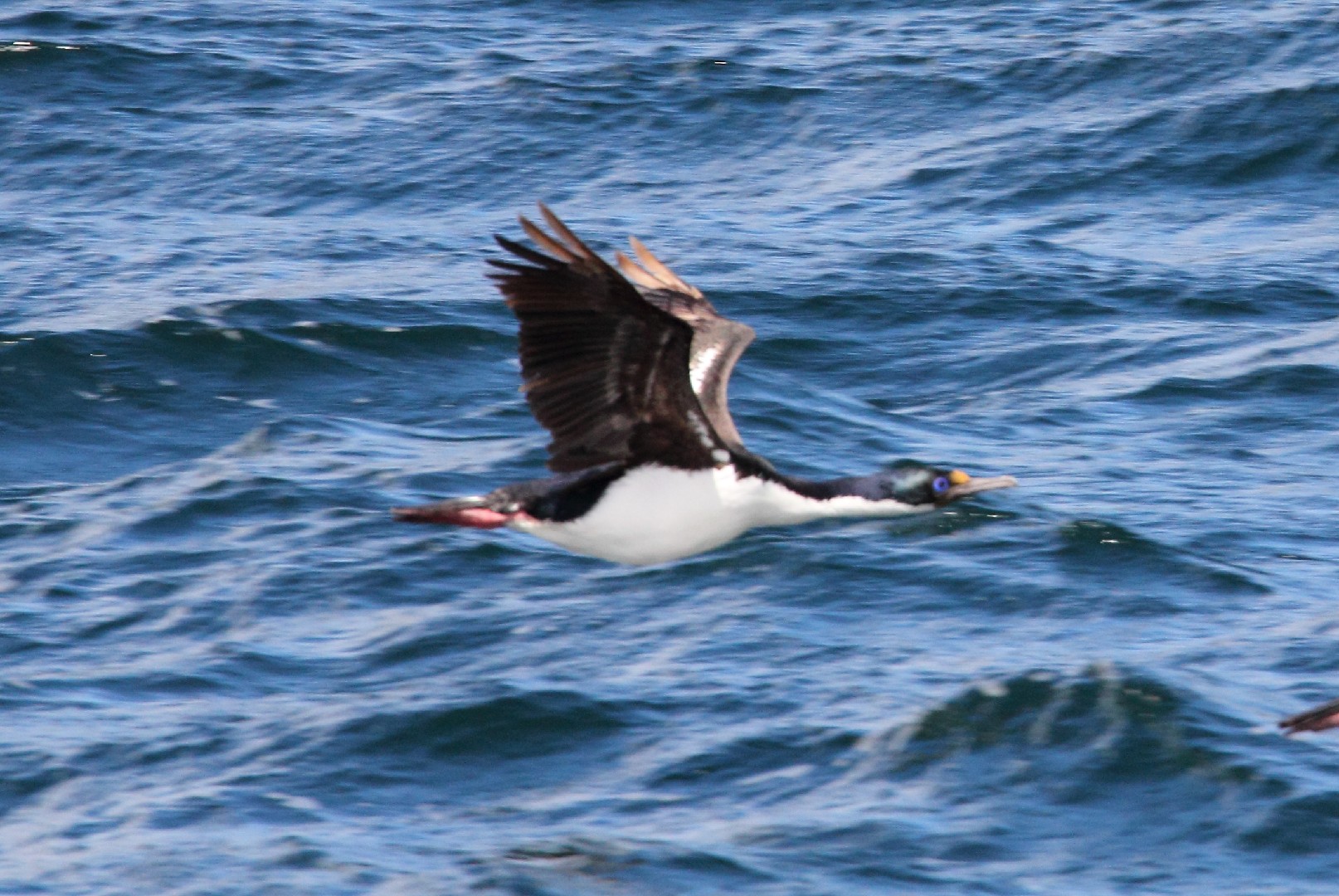Imperial Shag
A species of Cormorant, Also known as White-bellied Shag, King Shag Scientific name : Leucocarbo atriceps Genus : Cormorant
Imperial Shag, A species of Cormorant
Also known as:
White-bellied Shag, King Shag
Botanical name: Leucocarbo atriceps
Genus: Cormorant
Content
Description General Info
 Photo By Dominic Sherony , used under CC-BY-SA-2.0 /Cropped and compressed from original
Photo By Dominic Sherony , used under CC-BY-SA-2.0 /Cropped and compressed from original Description
The imperial shag has a total length of 70–79 cm (28–31 in) and weighs 1.8–3.5 kg (4.0–7.7 lb), with males usually larger than females. It is endowed with glossy black feathers covering most of its body, with a white belly and neck. It possesses a distinctive ring of blue skin around its eyes, an orange-yellow nasal knob, pinkish legs and feet, and an erectile black crest. During the non-breeding season, adults lack the crest, have a duller facial area, and less/no white to the back/wings. It has a serrated bill used for catching fish. The group varies primarily in the amount of white on the cheeks/ear-coverts, wing-coverts and back. Most taxa have white cheeks and ear-coverts, but these are black in albiventer, purpurascens and melanogenis. Chicks are uniform brownish, and immatures are brownish and white (instead of black and white), have dull facial skin, and lack the orange-yellow nasal knob and blue eye-ring. 
Size
76 cm
Nest Placement
Cliff
Feeding Habits
Imperial Shag's diet comprises mostly benthic fish, crustaceans, and mollusks, favoring Argentine anchoita. They typically forage inshore, diving around 25m. Known to travel offshore for feeding.
Habitat
Imperial Shag is typically found in coastal and island habitats, primarily utilizing flat platforms, cliffs, and rocky islets for breeding. Their roosting preferences include sandy beaches and areas scattered with boulders. For foraging, imperial Shag typically stays within 25 km of its nesting site, though it can venture out up to 50 km in pursuit of food.
Dite type
Piscivorous
General Info
Feeding Habits
Bird food type
Species Status
Overall this species is not considered threatened and is consequently listed as Least Concern by BirdLife International and IUCN. Most subspecies are relatively common with estimates of over 10,000 pairs of each 
Scientific Classification
Phylum
Chordates Class
Birds Order
Gannets and Relatives Family
Cormorants Genus
Cormorant Species
Imperial Shag